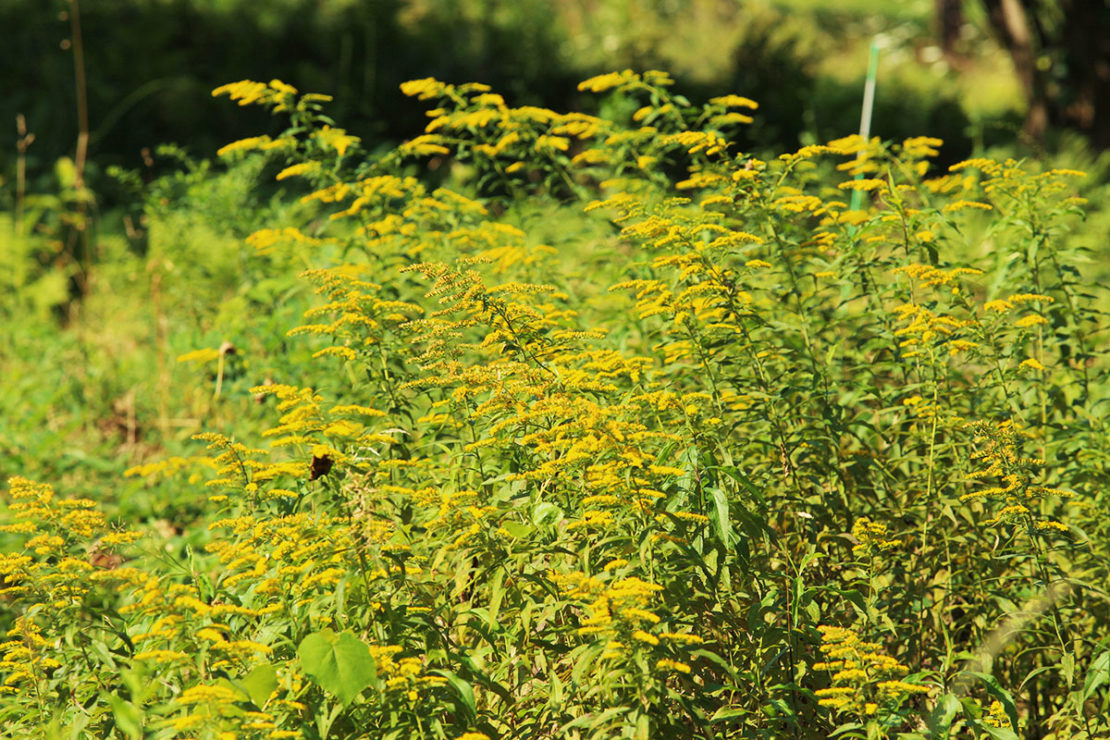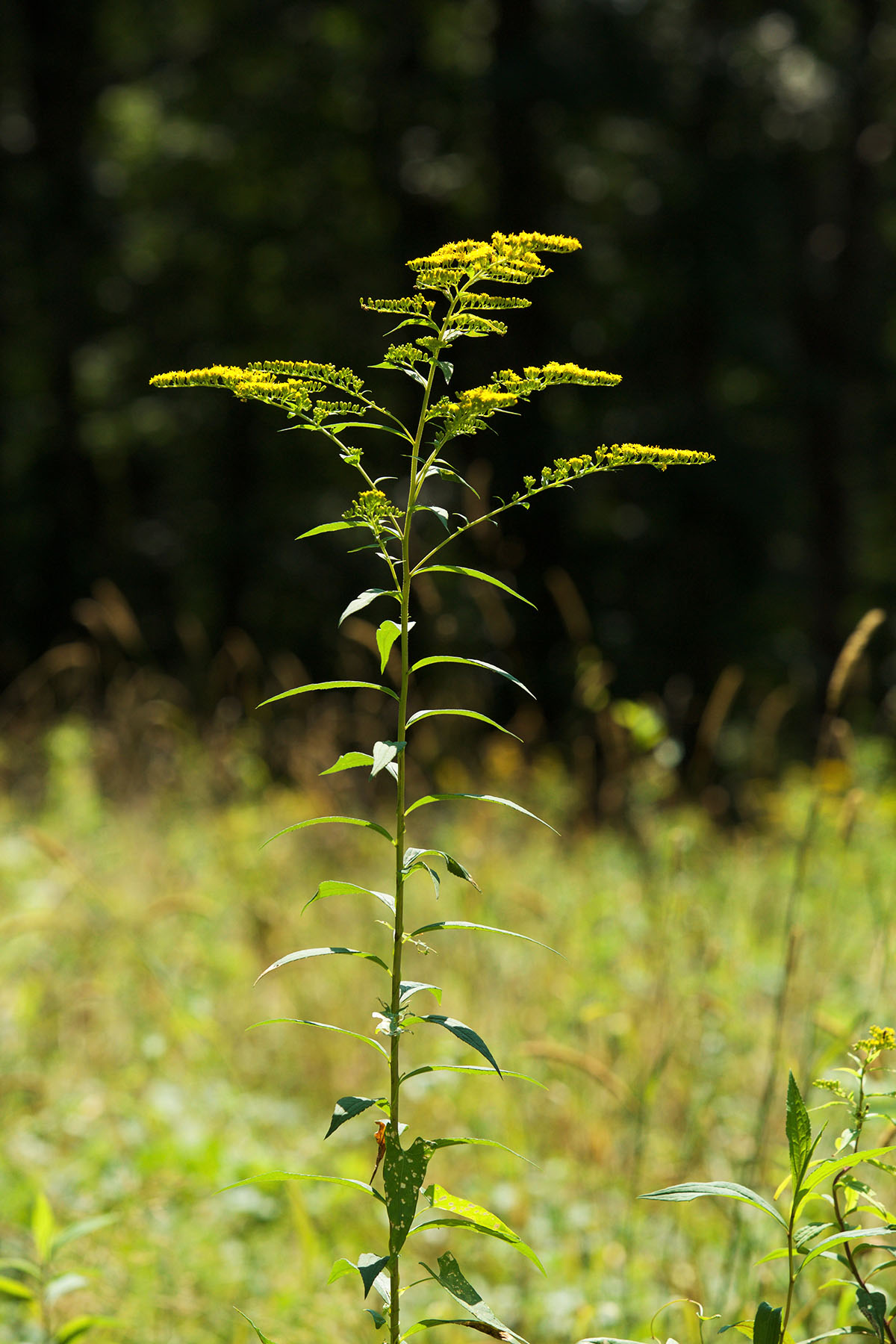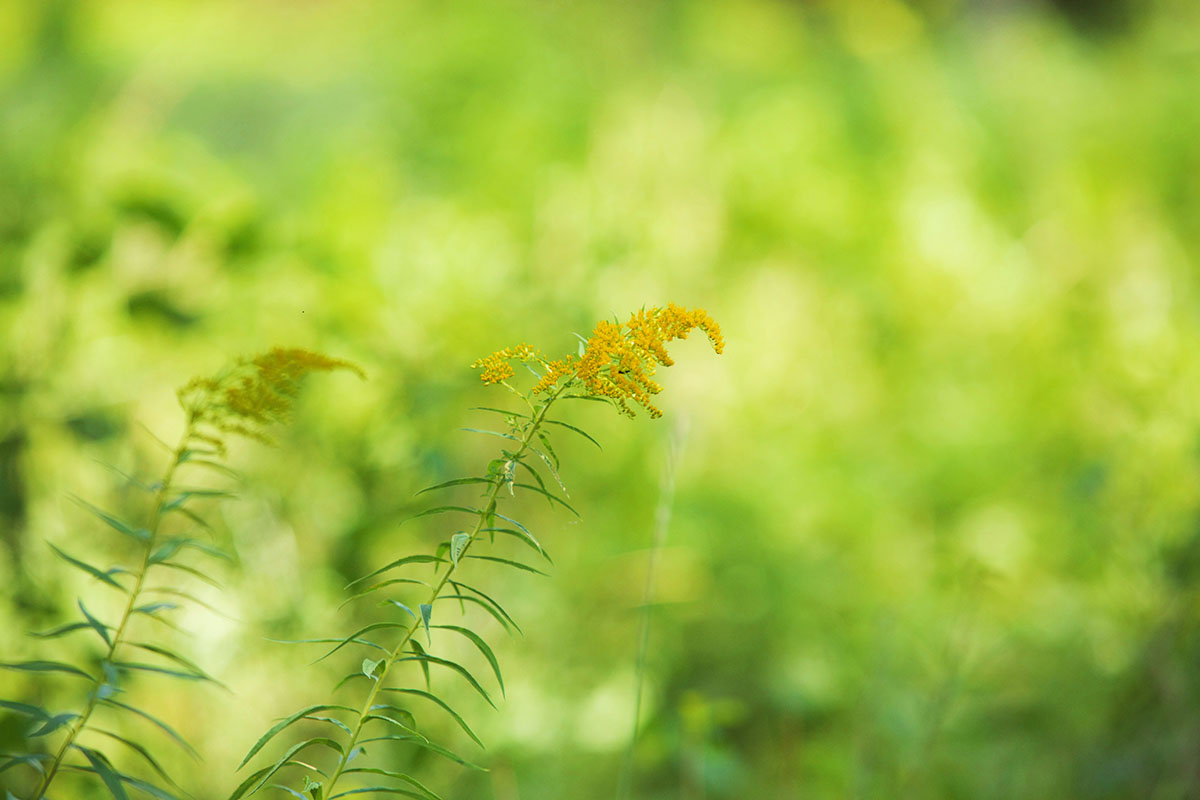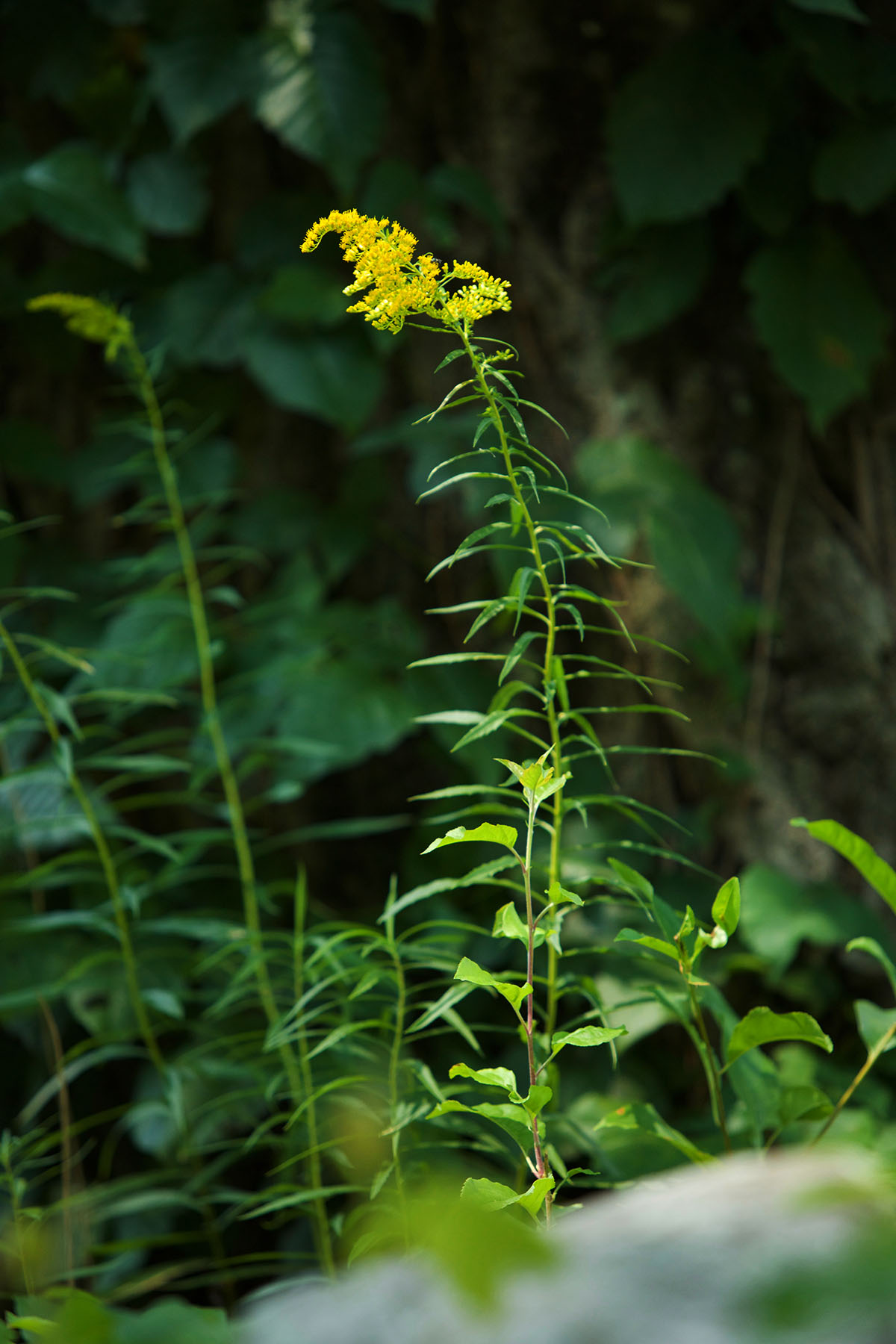
3 Tips For Foraging Goldenrod This Year
As we move into fall, the colors of the landscape begin to change from the brilliant reds, purples, lavenders, and pinks of summer to the deeper colors of autumn—yellows, golds, oranges, deep reds, and browns.
As these seasonal changes in nature relate to our own rhythms, I was taught to eat and make herbal preparations according to the season. Incorporating colorful foods like squash, pumpkin, fall apples, and tomatoes is an easy way to eat seasonally, and when it comes to making seasonal herbal preparations, one doesn’t have to look far to see the bright yellow flowers of goldenrod (Solidago spp.) as well as several other fall herbs.
Goldenrod: A Bountiful Fall Herb
The Solidago genus of plants are in the Aster family (Asteraceae) and have between forty and sixty different species in North America. Unfortunately, goldenrod is often blamed for hay fever, but it is ragweed that is the culprit! Goldenrod’s showy flowers catch the eye more readily than the more subtle ragweed, drawing attention (and blame) to itself, but its pollen is not airborne. Instead, goldenrod is pollinated by bees and other insects.

Goldenrod has many uses, both health-wise and culinary. You can read more about the health benefits of goldenrod here.
Because goldenrod is bountiful in the cool, autumn months, it can be a great herb to forage and use in herbal preparations. Here are three tips to keep in mind when you are foraging goldenrod this year.
3 Tips For Foraging Goldenrod
1. Positive Plant Identification Is Critical
First, make sure you have one of the Solidago plants! S. canadensis can be found growing in dry or semi-wet areas. The plants can get up to seven feet tall, but are usually around 3 to 4 feet in our area. Flowers appear in mid to late summer and can continue through September—sometimes even October. The leaves are 2 to 5 inches long, are lanceolate, and have fine hairs on them. Some of the leaves smell like anise, but many do not. The brightly colored flowers are yellow and mostly grow on one side of a long branch that droops over.
Most people agree that S. canadensis and/or S. odora are the tastiest and most beneficial for health, but everyone has their favorite. I encourage you to find the variety that works best for you and your purposes, preferably one that is easily obtainable in your location. Many herbalists feel that most goldenrods are easily interchangeable.
Correctly identifying a plant is critical to foraging success. Many plants have poisonous look-alikes, and the Solidagos are no exception. The Senecio species in the daisy family can look similar to goldenrod to a new herbalist or forager. If you are unsure whether or not you have found the correct plant, leave it! It is best to go foraging with an experienced forager/herbalist before attempting to do it yourself in order to gain experience. It’s also a good idea to read your plant identification books very carefully before starting out and to cross-check between multiple books to positively identify a plant. Generally, once you know how to identify a specific plant, that knowledges becomes solidly ingrained in your head.
2. Timing Is Everything

Harvesting any herb requires your full attention to the stages it goes through in order to harvest the plant for optimal benefits, and goldenrod is no exception.
Goldenrod Leaves
When I’m foraging goldenrod, I prefer to harvest the leaves just before the flowers open or when some are open and others are just opening. Goldenrod is prone to powdery mildew and rust, so choose your leaves with care to avoid infected leaves. In fact, it is best to keep an eye on the overall condition of the plant when foraging goldenrod, harvesting from healthy, robust plants.
Goldenrod Flowers
Be aware that drying goldenrod flowers (when in full bloom) often leads to the flowers turning to fluff so I like to use the flowers fresh.
Goldenrod Seeds
Some people will wait until the goldenrod goes to seed before foraging and drying the seeds.
Goldenrod Roots
Harvest the roots in the fall after the first heavy frost. Wash them well, cut them up into small, thin pieces, and dehydrate them thoroughly.
Time of Day for Foraging Goldenrod
I typically forage after the dew has dried and before the sun is at its hottest. That is around 11:00 AM this time of year where I live.
I try to get my harvest processed immediately. If drying, I put them in the food dehydrator. Air drying in the fall can be tricky due to dampness and lack of warm temperatures. If the temperature is high, I like to place my foraged material in brown paper bags (mark them so you don’t forget what they are) and put them in the backseat of my car. Then, I’ll park in the sun with the windows open so air can circulate. This is ideal in the summer, but if you want to do this during the fall months, you have to be careful to pick the best day for it.
3. How To Use Foraged Goldenrod

Goldenrod has so many uses! Below, I share some ways to put your foraged goldenrod to use.
Goldenrod Leaves
The leaves can be used in salves and some can be dried for winter teas.
One of the most interesting pieces of trivia about goldenrod is it is one of the ingredients in colonial America’s “Liberty Tea.” When the country was being formed and tea was considered to be anti-patriotic due to King George and his taxes, people turned to herbs to make their teas, particularly after the Boston Tea Party. Goldenrod was among the herbs commonly used as alternatives. Others included chamomile, clover, roses, violets, monarda, mints, and dried berries. Tea blends were usually dependent on geography and what was available in a particular area or their gardens (Richardson, 2013).
Goldenrod Flowers
I like to harvest the flowers and put the petals in sugar cookies, shortbreads, salads, muffins, and pancakes.
I tincture the full bloom flowers fresh. Goldenrod flowers can also be infused in your favorite wine for winter enjoyment or included in apple cider vinegar to add to salad dressings.
The bright yellow goldenrod flowers have also been used as a natural plant dye plant. These are used fresh since the dried flowers do not produce nearly the same yellow color as the fresh flowers. To use goldenrod as a natural dye, simply cut the flowers when in full bloom and simmer them for at least an hour in water. While your flowers are simmering, prepare your fabric by simmering it in hot water with a mordant. This will help your color stick to the fabric. (Mordants used vary from dyer to dyer. I use aluminum sulfate and cream of tartar, but I have only dyed wool. Check with an experienced dyer to find the best mordant for your fabric.) Next, strain the plant material from the liquid. Finally, soak your fabric in your herbal liquid. Various soaking times will yield different depths of color. When it’s finished soaking, squeeze the excess liquid from the fabric and hang it to dry.
Some of my friends claim that the bent over goldenrod flower points to hidden treasure such as an underground spring. On the other hand, it may simply be pointing to the goldenrod plant next to it!
Goldenrod is commonly used in the home for boosts of energy. Cut a bouquet of flowers with long stems and place them in a large vase. Place these vases in sick rooms or other rooms that need a positive energy charge. The bright yellow colors can do a lot to improve a mood!
Goldenrod Seeds
Dried goldenrod seeds can be powdered and used as a thickener in soups. I have never noticed it imparting a bad or “herby” flavor to the soup. However, if you give this a try, you may want to start with a small amount of seed powder to start.
Goldenrod Root
Goldenrod root can be decocted in water or powdered.
Will You Be Foraging Goldenrod This Year?
Autumn is here, and we are in the middle of the great goldenrod bloom, and I hope this post has encouraged you to foraging goldenrod this year!

REFERENCES:
Pavek, P.L.S. (2011). Plant guide for Canada goldenrod (Solidago canadensis). Pullman, WA: USDA-Natural Resources Conservation Service. Retrieved from: https://plants.usda.gov/plantguide/pdf/pg_soca6.pdf
Richardson, B. (2013). Liberty Teas of Colonial Boston. [Blog post]. Retrieved from https://www.bostonteapartyship.com/tea-blog/liberty-teas-of-colonial-boston
Werner, P.A., Bradbury, I.K., & Gross, R.S. (1980). The biology of Canadian weeds. 45. Solidago canadensis L. Canadian Journal of Plant Science, 60, 1393-1409.







